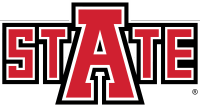Building Productive Relationships With Differing Personalities Among Middle School PLC Group Members
Date of Award
9-12-2024
Document Type
Dissertation
Degree Name
Educational Leadership, Ed.D.
First Advisor
Ibrahim Duyar
Committee Members
Donna Madison-Bell, Erin Symmonds
Call Number
LD 251 .A566d 2024 S67
Abstract
Collaboration and collegiality in forced workplace groups is an expectation at the middle level of K-12 education. Teachers at this level are still questioning why certain groups work well together and others do not. The purpose of this ethnographic study was to examine the personal work attitudes of highly functioning middle school professional learning communities to discover collegiality preferences of coworkers and the areas of professional and personal development they found valuable to their success. Data was collected through a multiple-phase approach from a large suburban Midwest school district. An ethnographic study was completed that included a participant self-administered Big Five Inventory, personal semi structured interviews, and observations of four professional learning community groups. Several important findings emerged that are relevant to members of workplace groups, professional development decision makers, and middle school administrators. Participant data revealed theoretical implications for differing personality traits in regard to professional and personal needs toward fostering collegiality and effectiveness. Recognizing differing attitudes of adaptability, effective communication, understanding diverse needs, leadership, and positive interpersonal dynamics among four personality dimensions of conscientiousness, agreeableness, openness, and extroversion play important roles. The findings revealed key areas of professional and personal importance for enhanced collaborative functioning in PLCs. Professional areas included adaptability, leadership, team dynamics, communication, problem-solving, and development opportunities. Personal areas involved well-being, relationships, work/life balance, and goal setting. An awareness of colleagues' work attitudes is valuable for positively navigating group dynamics at the member level. Moreover, knowing the areas valued by high-functioning teams can inform professional development leaders on tailoring interventions to foster a more collaborative environment.
Rights Management

This work is licensed under a Creative Commons Attribution-NonCommercial-No Derivative Works 4.0 International License.
Recommended Citation
Spiegel, Jennifer L., "Building Productive Relationships With Differing Personalities Among Middle School PLC Group Members" (2024). Student Theses and Dissertations. 41.
https://arch.astate.edu/all-etd/41

